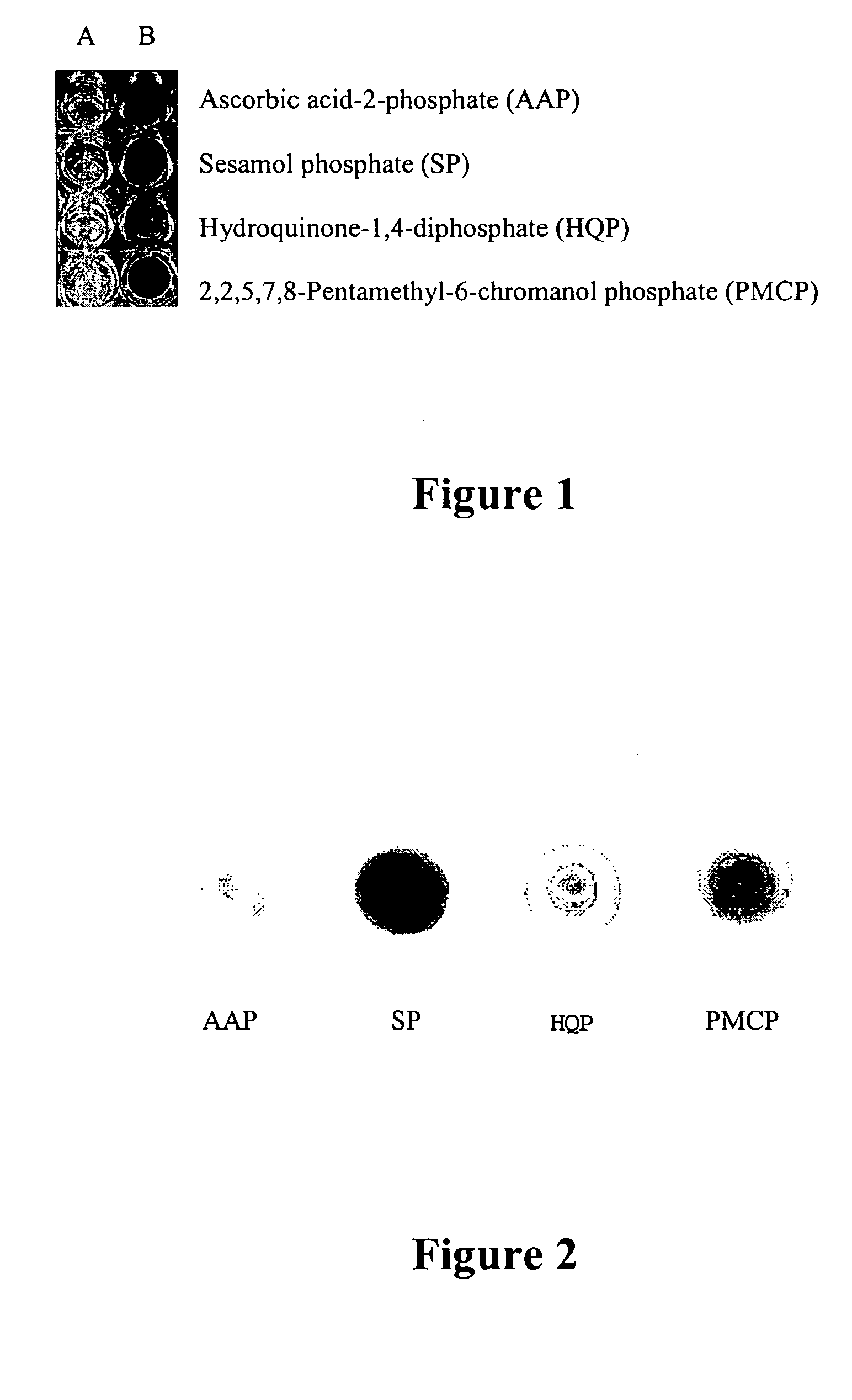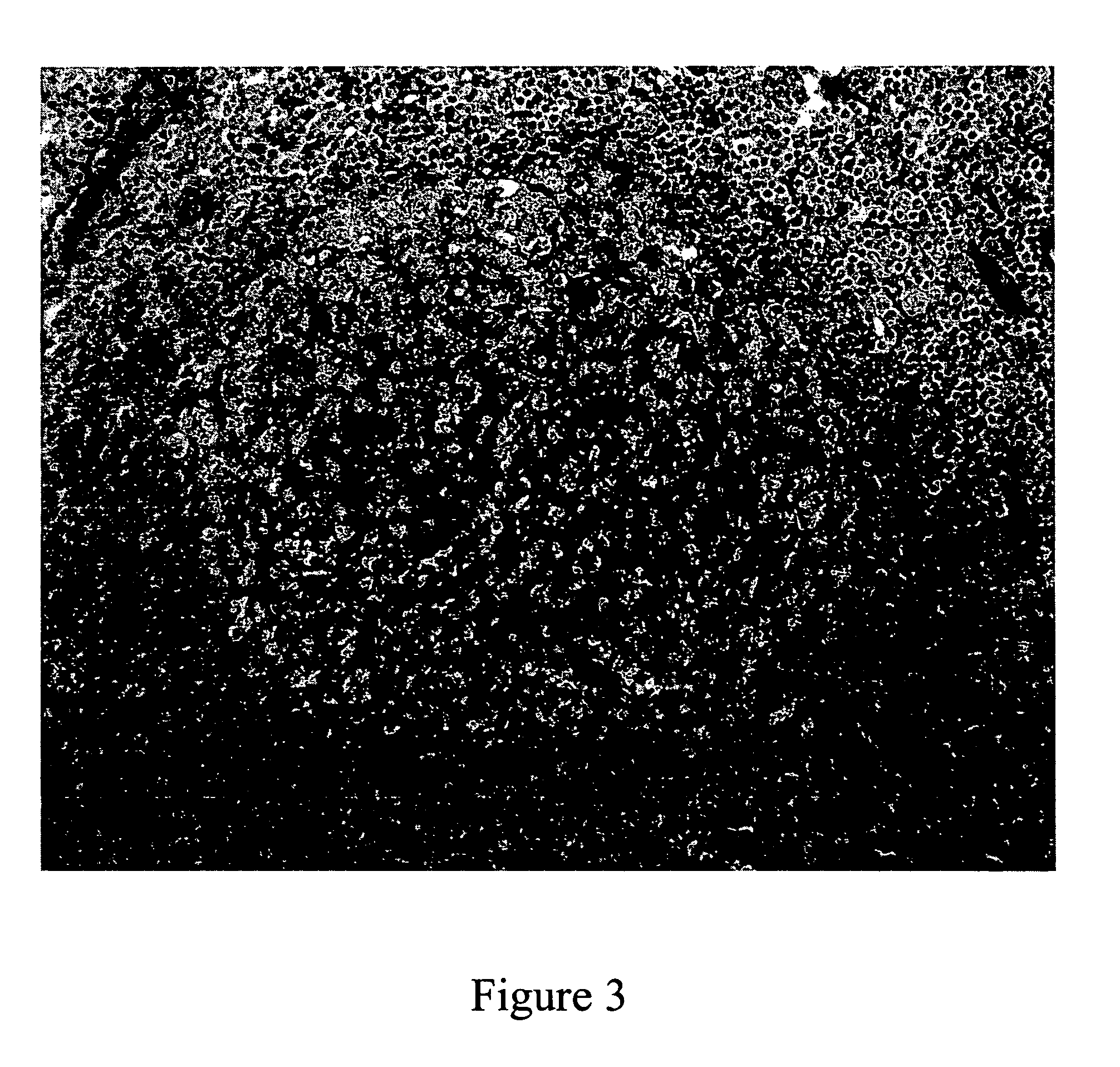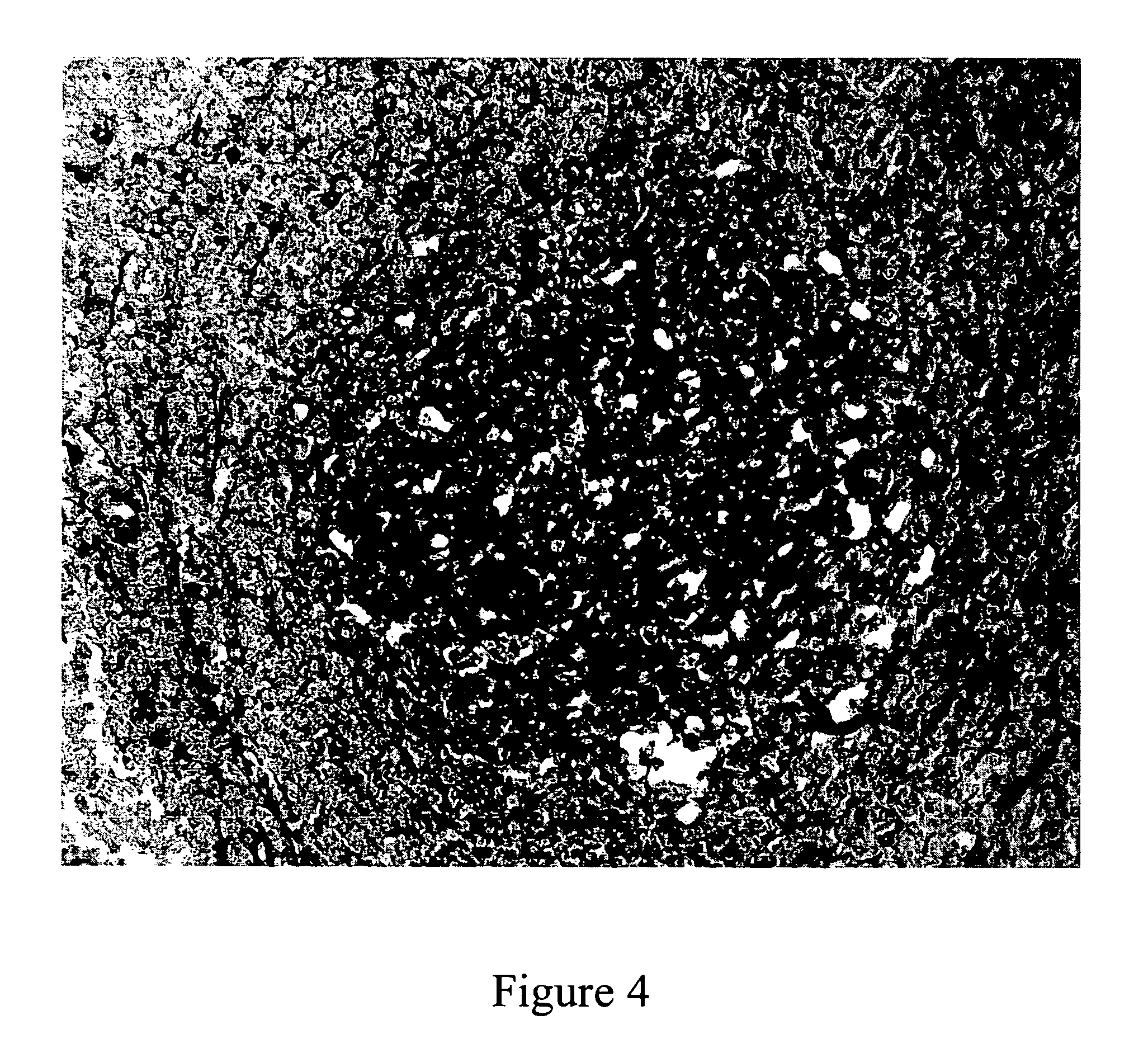Enzyme-catalyzed metal deposition for the enhanced detection of analytes of interest
a metal deposition and enzyme-catalyzed technology, applied in the field of immunochemistry, can solve the problems of inability to detect small peptides, most drugs, and low analyte concentration, and achieve the effect of high assay sensitivity, accurate determination and rapid
- Summary
- Abstract
- Description
- Claims
- Application Information
AI Technical Summary
Benefits of technology
Problems solved by technology
Method used
Image
Examples
example 1
[0126] Phosphates for Alkaline-Phosphatase Mediated Reduction of Silver (I)
[0127] Silver nitrate (100 μL of 50 mM AgNO3) was aliquoted into the wells of a microtiter plate (see FIG. 1). Addition of 100 μL of a 50 mM solution of either ascorbic acid-2-phosphate (wells A1, B1), sesamol phosphate (wells A2, B2), hydroquinone-1,4-diphosphate (wells A3, B3), or 2,2,5,7,8-pentamethyl-6-chromanol phosphate (wells A4, B4) to the silver solution did not elicit any reaction. If calf-intestinal alkaline phosphatase (5 μL of 0.2 mg / mL) was added to the Column B wells, each solution formed metallic silver (0) as either a fine, black precipitate or silvering of the container walls.
[0128] Column A: 100 μL of 50 mM AgNO3 and 100 μL of 50 mM substrate phosphate.
[0129] Column B: 100 μL of 50 mM AgNO3, 100 μL of 50 mM substrate phosphate, and 5 μL of 0.2 mg / mL calf-intestinal alkaline phosphatase (Pierce Chemical, Rockford, Ill.) in 100 mM Tris, pH 7.0.
example 2
Alkaline Phosphatase, Silver Nitrate, And Substrate Phosphates On Nitrocellulose
[0130] Alkaline phosphatase (5 μL of 0.2 mg / mL) was added to nitrocellulose paper and dried (see FIG. 2). Each of the phosphates were spotted on the nitrocellulose as 5 μL of 0.05M solution in 0.1M Tris, pH 9. When 5 μL of 0.05M AgNO3 was added to each dried spot, a black precipitate was observed only at the spot where alkaline phosphatase was applied.
example 3
Offline Development of Ag Nanoparticles on Tonsil Using the AP-SA Conjugate at High pH
[0131] The preparation of the slides for analysis was done on a Ventana Benchmark® automated staining instrument (Ventana Medical Systems, Inc., Tucson, Ariz.). The slides were removed for manual development of signal. The use of the term “buffer” within this Example refers to a 0.1 M Tris buffer (Trizma base (Sigma-Aldrich) in dI H2O pH to 9 using glacial acetic acid (Sigma-Aldrich). The following is the adapted procedure from the instrument: the paraffin-coated tissue on the slide was heated to 75° C. for 4 minutes and treated twice with EZPrep™ (Ventana, Tucson, Ariz.) volume adjusted at 75° C. before application of the liquid cover slip with EZPrep volume adjust. After 4 minutes at 75° C., the slide was rinsed and automated deparaffinization volume adjust was added along with liquid cover slip to deparaffinize the tissue at 76° C. for 4 minutes. The slide was cooled to 40° C. and rinsed three ...
PUM
| Property | Measurement | Unit |
|---|---|---|
| pH | aaaaa | aaaaa |
| pH | aaaaa | aaaaa |
| pH | aaaaa | aaaaa |
Abstract
Description
Claims
Application Information
 Login to View More
Login to View More - R&D
- Intellectual Property
- Life Sciences
- Materials
- Tech Scout
- Unparalleled Data Quality
- Higher Quality Content
- 60% Fewer Hallucinations
Browse by: Latest US Patents, China's latest patents, Technical Efficacy Thesaurus, Application Domain, Technology Topic, Popular Technical Reports.
© 2025 PatSnap. All rights reserved.Legal|Privacy policy|Modern Slavery Act Transparency Statement|Sitemap|About US| Contact US: help@patsnap.com



